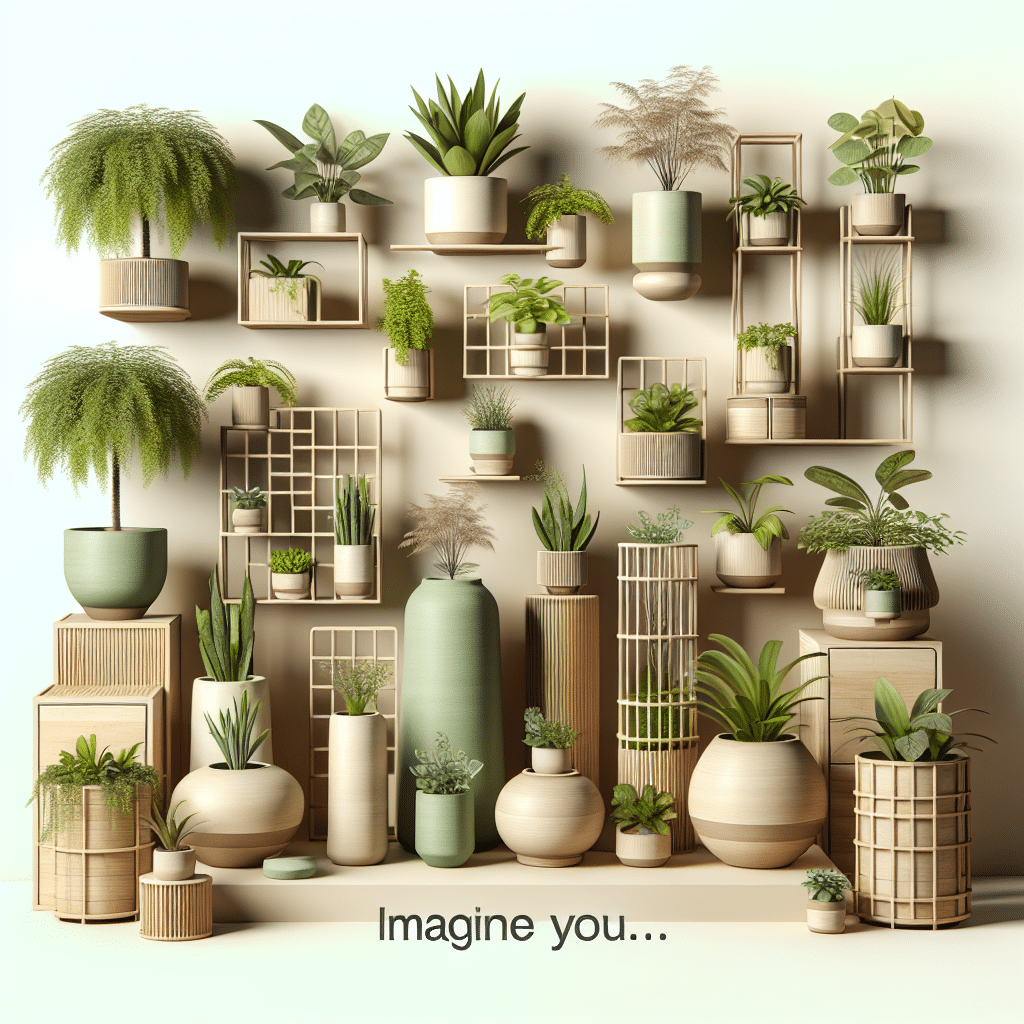Compact Planters Designed for Small Spaces
Understanding Compact Planters
Compact planters are innovative gardening solutions specifically designed to enhance and simplify urban and small-space gardening. These planters are ideal for apartment balconies, patios, small yards, or even indoors. Compact planters maximize growing potential while minimizing the footprint, allowing gardeners to cultivate herbs, flowers, and vegetables in limited spaces.
Benefits of Compact Planters
-
Space Efficiency: Compact planters are designed to fit into tight spaces. Vertical garden systems, railing planters, and tiered planters make the most of vertical space, allowing you to grow more in smaller areas.
-
Aesthetic Appeal: Available in various designs and materials, compact planters can improve your space’s aesthetics. From sleek modern designs to rustic wooden pots, there’s a planter to match every style.
-
Easier Maintenance: Smaller areas mean easier maintenance. Compact planters usually require less soil and water, making them manageable for both novice and experienced gardeners.
-
Mobility: Many compact solutions come with wheels or are lightweight, allowing for easy movement. Adjusting your plants’ lighting or rearranging your garden becomes a simple task.
-
Organic Growth: They often use sustainable materials and are purpose-built to ensure proper drainage and aeration, promoting healthier plants.
Types of Compact Planters
-
Vertical Planters: These are ideal for maximizing space. They allow you to grow multiple plants vertically, which can be incredibly effective in urban settings. Usually constructed with pockets to hold soil and plants, these planters can be hung on walls or fences.
-
Railing Planters: Perfect for balconies, railing planters can be attached to vertical surfaces like balcony railings. They usually come with hooks and brackets for secure attachment. Perfect for herbs and trailing flowers, they provide an excellent way to utilize otherwise wasted space.
-
Tiered Planters: Tiered planters consist of multiple levels of planting beds stacked on top of each other. This design maximizes growing space while creating a visually appealing arrangement. They can house a variety of plants, from flowers to vegetables, in a compact footprint.
-
Self-Watering Planters: These planters are designed with a reservoir that allows plants to draw moisture as needed. They are particularly beneficial for those who may forget to water regularly, ensuring optimal growing conditions without constant attention.
-
Wall-Mounted Planters: These are ideal for small indoor spaces. Wall-mounted planters keep the floor area free while allowing you to grow a range of plants, from succulents to herbs. They are typically designed for easy installation.
-
Window Boxes: A popular option for apartment dwellers, window boxes can be set on ledges or attached outside the window. They are great for flowers, herbs, and vegetables like strawberries.
Ideal Plants for Compact Planters
While compact planters can accommodate a wide range of plants, certain varieties thrive better in limited space. Here are some suggestions:
-
Herbs: Basil, mint, cilantro, and thyme are perfect for compact environments. They require minimal space and provide fresh flavors for home cooking.
-
Salad Greens: Lettuce, spinach, and arugula grow quickly and can be harvested multiple times, making them ideal candidates for compact planters.
-
Succulents: These drought-resistant plants thrive in small pots and add a modern touch to indoor spaces.
-
Compact Vegetable Varieties: Look for dwarf or bush varieties like cherry tomatoes, peppers, and compact cucumbers, which can flourish even in limited spaces.
-
Ornamental Flowers: Pansies, petunias, and marigolds provide color and beauty without requiring a lot of room.
Materials for Compact Planters
Materials play a crucial role in the functionality and aesthetic appeal of compact planters. Here’s a breakdown of the most common materials:
-
Wood: Wooden planters offer natural aesthetics and insulation for roots but require maintenance to prolong their lifespan.
-
Plastic: Lightweight, affordable, and available in many styles and colors. Plastic planters are often UV-resistant and can be suited for both indoor and outdoor use.
-
Metal: Galvanized steel or aluminum planters are durable and stylish. However, they can become hot in direct sunlight, which may affect sensitive plant roots.
-
Ceramic and Terracotta: These materials provide a classic look, ensuring excellent breathability. However, they are heavier and can break easily.
-
Fabric Planters: Made from breathable materials, these planters promote healthy root growth and drain excess water effectively, making them lightweight and portable.
Tips for Using Compact Planters Effectively
-
Choose the Right Location: Assess sunlight availability. Most herbs and vegetables need at least 6-8 hours of sunlight daily. Ensure your chosen location meets these light requirements.
-
Mind the Drainage: Always check for proper drainage to prevent waterlogging, which can damage roots. Consider adding rocks at the base of the planter or opting for self-watering planters.
-
Opt for Quality Soil: Use a high-quality potting mix designed for containers. Look for soil that retains moisture but also drains well to support healthy root development.
-
Group Plants Wisely: Grouping plants with similar water and light requirements can enhance growth and maintain a healthy environment.
-
Rotate Plants: Rotate your plants periodically for even exposure to sunlight and to prevent pests from taking root in a specific area.
-
Fertilization: Use organic or slow-release fertilizers occasionally to replenish nutrients. Since compact planters have less soil, nutrients can deplete more quickly than in traditional gardens.
Conclusion
Compact planters offer a viable solution for urban gardeners looking to maximize their limited space. By choosing the right type of planter, understanding plant needs, and maintaining optimal growing conditions, you can create a thriving garden in even the smallest of spaces. Whether you’re growing herbs on a sunny balcony or flowers in a window box, compact planters can transform any small area into a lush oasis of greenery. Embrace the compact gardening trend and enjoy the beauty and bounty that small space gardening can bring!
